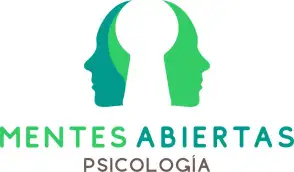What is Cardiofobia?
Cardiofobia, also known as cardiophobia, is a psychological condition characterized by an intense, persistent, and disproportionate fear of suffering a heart condition. Despite undergoing numerous medical tests that rule out cardiac problems, the individual continues to experience distressing bodily symptoms (palpitations, chest tightness, stabbing pains, dizziness) and is convinced that death from a heart attack is imminent.
From a clinical perspective, cardiofobia can be understood as an anxiety disorder with phobic and somatic features. It is not simply an irrational fear — it is a very real experience for those who suffer from it, often accompanied by hypervigilance, frequent emergency room visits, and chronic worry.
Limitations of Traditional Approaches
Traditional cognitive-behavioral approaches have focused on symptom reduction through cognitive restructuring, exposure therapy, and anxiety control strategies. While helpful in many cases, these approaches sometimes fall short when people become entangled in an ongoing struggle to eliminate their internal discomfort — a struggle that paradoxically amplifies suffering.
This is where Acceptance and Commitment Therapy (ACT) offers a powerful alternative. Instead of trying to suppress or eliminate distressing thoughts and sensations, ACT invites individuals to change their relationship with these experiences, open up to them, and commit to living a life aligned with their deepest values — even in the presence of fear.
The ACT Perspective: Changing the Relationship with Discomfort
ACT doesn't aim to reduce symptoms as its primary goal. Instead, it seeks to increase psychological flexibility: the ability to be present, open to inner experience, and take meaningful action. In cardiofobia, this means learning to stop fighting with fear or bodily sensations and start living a richer, value-based life, even if anxiety remains.
In this model, the symptom is not the problem — the problem lies in how we relate to it. When people desperately try to avoid, control, or eliminate uncomfortable thoughts ("I'm going to die"), emotions (fear), and bodily sensations (heart racing), they often become more restricted, anxious, and disconnected from what really matters.
The ACT Hexaflex Applied to Cardiofobia
ACT is structured around six core psychological processes that work together to build flexibility. Here's how each applies to cardiofobia:
1. Cognitive Defusion
Instead of challenging the thought “I’m going to have a heart attack,” clients are encouraged to observe it as just a thought — not a fact. Techniques may include repeating the thought aloud with a silly voice, labeling it (“I’m having the thought that…”), or visualizing it floating by like a cloud.
2. Acceptance
ACT helps individuals stop fighting against bodily sensations and emotions. Acceptance involves allowing physical sensations (like palpitations or chest tightness) to be there without trying to control or escape them. This often includes mindfulness-based body scans or metaphors like "riding the wave" or "opening the door to an unwanted guest."
3. Contact with the Present Moment
Cardiofobia often pulls people into future catastrophes or ruminations about past panic episodes. ACT brings focus back to the here and now. Clients are taught to anchor in their senses, the breath, or their surroundings — helping them shift attention away from internal monitoring (like checking their pulse).
4. Self-as-Context
Individuals with cardiofobia may become fused with the identity of "fragile" or "sick." ACT introduces the idea of the observing self — the awareness behind all experiences. Using metaphors like “the chessboard” or “the stage,” clients learn they are the container of their experiences, not the experiences themselves.
5. Values Clarification
ACT asks: What has this fear taken away from you? What relationships, activities, or dreams have been sacrificed in the name of safety? Through values clarification, individuals reconnect with what truly matters — connection, vitality, freedom, exploration — and use these as a compass for decision-making.
6. Committed Action
Guided by values, clients begin to take meaningful steps — even if fear is present. This may involve exposure to avoided situations (e.g., exercising, walking alone, traveling) but with a different purpose: not to reduce fear, but to live a fuller life. The goal is not symptom control, but life expansion.
Clinical Example
Marina, 42 years old, mother of two, had stopped exercising and avoided being alone due to her fear of dying from a heart attack. She had been to the ER more than 15 times in the past year, despite clean medical tests.
In ACT therapy, we began with cognitive defusion — learning to observe her catastrophic thoughts instead of being controlled by them. Then we practiced acceptance of bodily sensations through mindfulness and interoceptive exposure (e.g., climbing stairs, dancing at home). As she reconnected with her value of vitality, she decided to return to yoga and resumed walking with her children.
While occasional symptoms still appeared, they no longer dominated her choices. She had stopped living under the rule of “I must feel safe” and instead began living by “I want to be present for what matters.”
Conclusion
Cardiofobia can be a debilitating and isolating experience. ACT offers a compassionate, scientifically grounded approach that goes beyond symptom control. By cultivating psychological flexibility, clients learn to make space for discomfort, reconnect with their values, and take committed action — even in the presence of fear.
Ultimately, recovery doesn’t mean having no fear. It means not letting fear decide how you live. ACT teaches us to walk alongside fear — not in its shadow, but with our gaze set firmly on what truly matters.


